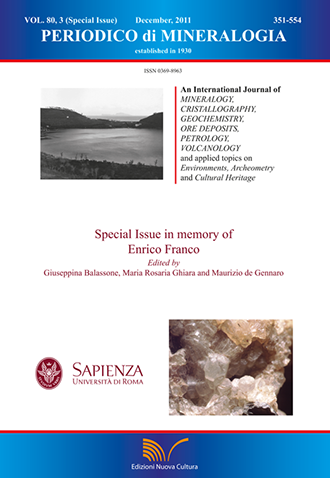Late-Hercynian post-collisional dyke magmatism in central Calabria (Serre Massif, southern Italy)
DOI:
https://doi.org/10.2451/2011PM0032Keywords:
post-collisional dyke magmatism, andesite, dacite-rhyodacite, Serre Massif, Calabria-Peloritani OrogenAbstract
Widespread late- to post-collisional magmatism occurred in the Calabria-Peloritani Orogen (southern Italy) during the final stages of the Hercynian Orogeny. In the Serre Massif (central Calabria), medium- to high-K calcalkaline andesitic to dacitic-rhyodacitic dykes show typical geochemical features of subduction-related magmas (LILE and LREE enrichment, HFSE depletion, peaks at Rb, Pb and Th). The origin of late- to post-Hercynian calcalkaline rocks is usually interpreted in an extensional post-collisional framework, involving thinning of the continental lithosphere and progressive passive upwelling of the asthenospheric mantle. In such a context, pure mantle, crustal and hybrid melt production likely can occur. The andesitic dykes were produced by partial melting of an enriched mantle source metasomatized by crustal fluids/melts during former subduction and then suffered minor, if any, assimilation of lower crustal metapelites. Most dacite-rhyodacites were likely derived by hybridization in various proportions of crustal and mantle melts, whereas pure crustal metasedimentary sources, and more or less efficient restite unmixing processes, were involved in the generation of the most silica-rich rhyodacites.


